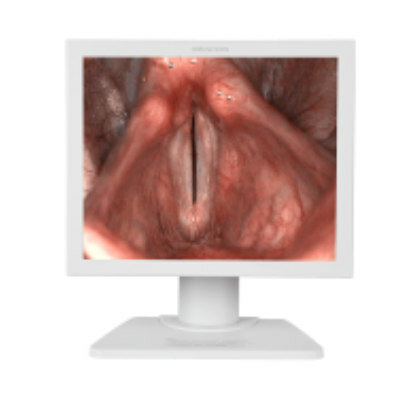Heparin Formulation Aids On-Site Management of Frostbite Injury
|
By HospiMedica International staff writers Posted on 27 Dec 2019 |

Image: A specially formulated nanogel treats frostbite (Photo courtesy of INST)
A novel nano-spray gel (NSG) formulation, which is based on a combination of liposomal heparin sodium and ibuprofen, provides rapid relief of frostbite injury in extremely low temperatures.
Developed by researchers at the Institute of Nano Science and Technology (INST; Mohali, India), Panjab University (Chandigarh, India), and other institutions, the NSG is a sprayable hydrogel based on heparin packaged into liposomes, lipid carriers that help to deliver the formulation deep into the skin. The liposomes also contain ibuprofen and propylene glycol, which help keep the spray from freezing at very low temperatures. A single spray puff of NSG delivers about 154 mg of the gel, which corresponds to around 205 U of heparin.
In a study of the spray gel on Sprague Dawley rats with frostbite injury, the researchers found that the treatment completely healed frostbite injuries within 14 days, whereas untreated injuries were only about 40% healed, and frostbite wounds treated with an antibiotic cream were about 80% healed. The spray also reduced levels of inflammatory cytokines (IL-6, TNF-α, IL-10, IL-4) at the wound site and in the blood circulation, which accelerated the healing process. The study was published on December 9, 2019, in ACS Biomaterials Science & Engineering.
“The critical time window between the incidence of frostbite injury and the initiation of treatment in remote snowbound areas is a determining factor for an effective therapeutic response,” concluded lead author Kalpesh Vaghasiya, MsPharm, of INST, and colleagues. “The instant on-site application of this formulation might be helpful in saving extremities of soldiers, mountaineers, and pilgrims having frostbite.”
Frostbite causes fluids in the skin and the underlying dermal tissues to freeze and crystallize, resulting in inflammation, decreased blood flow, and cell death. Extremities are the most affected areas, because they are farther away from the body's core. If frostbite is not treated promptly, it can lead to gangrene and amputation of the affected limbs. Conventional treatments include immersing the body part in warm water, applying topical antibiotic creams, or administering vasodilators and anti-inflammatory drugs, but many of these are unavailable in isolated snowy areas, like mountaintops. Other options, such as topical medications, could end up freezing themselves.
Related Links:
Nano Science and Technology
Panjab University
Developed by researchers at the Institute of Nano Science and Technology (INST; Mohali, India), Panjab University (Chandigarh, India), and other institutions, the NSG is a sprayable hydrogel based on heparin packaged into liposomes, lipid carriers that help to deliver the formulation deep into the skin. The liposomes also contain ibuprofen and propylene glycol, which help keep the spray from freezing at very low temperatures. A single spray puff of NSG delivers about 154 mg of the gel, which corresponds to around 205 U of heparin.
In a study of the spray gel on Sprague Dawley rats with frostbite injury, the researchers found that the treatment completely healed frostbite injuries within 14 days, whereas untreated injuries were only about 40% healed, and frostbite wounds treated with an antibiotic cream were about 80% healed. The spray also reduced levels of inflammatory cytokines (IL-6, TNF-α, IL-10, IL-4) at the wound site and in the blood circulation, which accelerated the healing process. The study was published on December 9, 2019, in ACS Biomaterials Science & Engineering.
“The critical time window between the incidence of frostbite injury and the initiation of treatment in remote snowbound areas is a determining factor for an effective therapeutic response,” concluded lead author Kalpesh Vaghasiya, MsPharm, of INST, and colleagues. “The instant on-site application of this formulation might be helpful in saving extremities of soldiers, mountaineers, and pilgrims having frostbite.”
Frostbite causes fluids in the skin and the underlying dermal tissues to freeze and crystallize, resulting in inflammation, decreased blood flow, and cell death. Extremities are the most affected areas, because they are farther away from the body's core. If frostbite is not treated promptly, it can lead to gangrene and amputation of the affected limbs. Conventional treatments include immersing the body part in warm water, applying topical antibiotic creams, or administering vasodilators and anti-inflammatory drugs, but many of these are unavailable in isolated snowy areas, like mountaintops. Other options, such as topical medications, could end up freezing themselves.
Related Links:
Nano Science and Technology
Panjab University
Latest Critical Care News
- Ingestible Capsule Monitors Intestinal Inflammation
- Wireless Implantable Sensor Enables Continuous Endoleak Monitoring
- Pulse Oximeter Index Offers Non-Invasive Guides for Fluid Therapy
- Wearable Patch for Early Skin Cancer Detection to Reduce Unnecessary Biopsies
- 'Universal' Kidney to Match Any Blood Type
- Light-Based Technology to Measure Brain Blood Flow Could Diagnose Stroke and TBI
- AI Heart Attack Risk Assessment Tool Outperforms Existing Methods
- Smartphone Imaging System Enables Early Oral Cancer Detection
- Swallowable Pill-Sized Bioprinter Treats GI Tract Injuries

- Personalized Brain “Pacemakers” Could Help Patients with Hard-To-Treat Epilepsy
- Microscopic DNA Flower Robots to Enable Precision Medicine Delivery
- Origami Robots to Deliver Medicine Less Invasively and More Effectively
- Improved Cough-Detection Technology Aids Health Monitoring
- AI Identifies Children in ER Likely to Develop Sepsis Within 48 Hours
- New Radiofrequency Therapy Slows Glioblastoma Growth
- Battery-Free Wireless Multi-Sensing Platform Revolutionizes Pressure Injury Detection
Channels
Surgical Techniques
view channel
Robotic Assistant Delivers Ultra-Precision Injections with Rapid Setup Times
Age-related macular degeneration (AMD) is a leading cause of blindness worldwide, affecting nearly 200 million people, a figure expected to rise to 280 million by 2040. Current treatment involves doctors... Read more
Minimally Invasive Endoscopic Surgery Improves Severe Stroke Outcomes
Intracerebral hemorrhage, a type of stroke caused by bleeding deep within the brain, remains one of the most challenging neurological emergencies to treat. Accounting for about 15% of all strokes, it carries... Read morePatient Care
view channel
Revolutionary Automatic IV-Line Flushing Device to Enhance Infusion Care
More than 80% of in-hospital patients receive intravenous (IV) therapy. Every dose of IV medicine delivered in a small volume (<250 mL) infusion bag should be followed by subsequent flushing to ensure... Read more
VR Training Tool Combats Contamination of Portable Medical Equipment
Healthcare-associated infections (HAIs) impact one in every 31 patients, cause nearly 100,000 deaths each year, and cost USD 28.4 billion in direct medical expenses. Notably, up to 75% of these infections... Read more
Portable Biosensor Platform to Reduce Hospital-Acquired Infections
Approximately 4 million patients in the European Union acquire healthcare-associated infections (HAIs) or nosocomial infections each year, with around 37,000 deaths directly resulting from these infections,... Read moreFirst-Of-Its-Kind Portable Germicidal Light Technology Disinfects High-Touch Clinical Surfaces in Seconds
Reducing healthcare-acquired infections (HAIs) remains a pressing issue within global healthcare systems. In the United States alone, 1.7 million patients contract HAIs annually, leading to approximately... Read moreHealth IT
view channel
Printable Molecule-Selective Nanoparticles Enable Mass Production of Wearable Biosensors
The future of medicine is likely to focus on the personalization of healthcare—understanding exactly what an individual requires and delivering the appropriate combination of nutrients, metabolites, and... Read moreBusiness
view channel
Philips and Masimo Partner to Advance Patient Monitoring Measurement Technologies
Royal Philips (Amsterdam, Netherlands) and Masimo (Irvine, California, USA) have renewed their multi-year strategic collaboration, combining Philips’ expertise in patient monitoring with Masimo’s noninvasive... Read more
B. Braun Acquires Digital Microsurgery Company True Digital Surgery
The high-end microsurgery market in neurosurgery, spine, and ENT is undergoing a significant transformation. Traditional analog microscopes are giving way to digital exoscopes, which provide improved visualization,... Read more
CMEF 2025 to Promote Holistic and High-Quality Development of Medical and Health Industry
The 92nd China International Medical Equipment Fair (CMEF 2025) Autumn Exhibition is scheduled to be held from September 26 to 29 at the China Import and Export Fair Complex (Canton Fair Complex) in Guangzhou.... Read more













